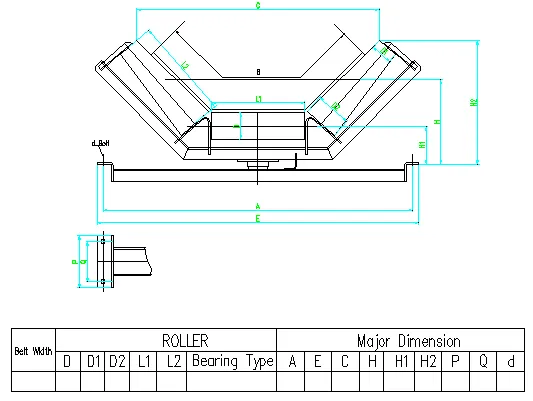 Afrikaans
Afrikaans  Albanian
Albanian  Amharic
Amharic  Arabic
Arabic  Armenian
Armenian  Azerbaijani
Azerbaijani  Basque
Basque  Belarusian
Belarusian  Bengali
Bengali  Bosnian
Bosnian  Bulgarian
Bulgarian  Catalan
Catalan  Cebuano
Cebuano  Corsican
Corsican  Croatian
Croatian  Czech
Czech  Danish
Danish  Dutch
Dutch  English
English  Esperanto
Esperanto  Estonian
Estonian  Finnish
Finnish  French
French  Frisian
Frisian  Galician
Galician  Georgian
Georgian  German
German  Greek
Greek  Gujarati
Gujarati  Haitian Creole
Haitian Creole  hausa
hausa  hawaiian
hawaiian  Hebrew
Hebrew  Hindi
Hindi  Miao
Miao  Hungarian
Hungarian  Icelandic
Icelandic  igbo
igbo  Indonesian
Indonesian  irish
irish  Italian
Italian  Japanese
Japanese  Javanese
Javanese  Kannada
Kannada  kazakh
kazakh  Khmer
Khmer  Rwandese
Rwandese  Korean
Korean  Kurdish
Kurdish  Kyrgyz
Kyrgyz  Lao
Lao  Latin
Latin  Latvian
Latvian  Lithuanian
Lithuanian  Luxembourgish
Luxembourgish  Macedonian
Macedonian  Malgashi
Malgashi  Malay
Malay  Malayalam
Malayalam  Maltese
Maltese  Maori
Maori  Marathi
Marathi  Mongolian
Mongolian  Myanmar
Myanmar  Nepali
Nepali  Norwegian
Norwegian  Norwegian
Norwegian  Occitan
Occitan  Pashto
Pashto  Persian
Persian  Polish
Polish  Portuguese
Portuguese  Punjabi
Punjabi  Romanian
Romanian  Russian
Russian  Samoan
Samoan  Scottish Gaelic
Scottish Gaelic  Serbian
Serbian  Sesotho
Sesotho  Shona
Shona  Sindhi
Sindhi  Sinhala
Sinhala  Slovak
Slovak  Slovenian
Slovenian  Somali
Somali  Spanish
Spanish  Sundanese
Sundanese  Swahili
Swahili  Swedish
Swedish  Tagalog
Tagalog  Tajik
Tajik  Tamil
Tamil  Tatar
Tatar  Telugu
Telugu  Thai
Thai  Turkish
Turkish  Turkmen
Turkmen  Ukrainian
Ukrainian  Urdu
Urdu  Uighur
Uighur  Uzbek
Uzbek  Vietnamese
Vietnamese  Welsh
Welsh  Bantu
Bantu  Yiddish
Yiddish  Yoruba
Yoruba  Zulu
Zulu conveyor pulley specification
Understanding Conveyor Pulley Specifications
Conveyor pulleys are vital components in any materials handling system, playing a crucial role in the transportation of bulk materials. Selecting the right conveyor pulley is essential for ensuring optimal performance, reliability, and productivity of the conveyor system. This article delves into key aspects of conveyor pulley specifications, helping you make informed decisions for your operations.
Types of Conveyor Pulleys
There are several types of conveyor pulleys, each designed for specific applications. The most common include drive pulleys, tail pulleys, and snub pulleys. Drive pulleys are powered by electric motors and are typically located at the head of the conveyor, while tail pulleys are found at the opposite end and offer support. Snub pulleys are used to increase the wrap angle of the belt around the drive pulley, enhancing friction and improving performance.
Material Considerations
The construction material of the pulley significantly impacts its strength and durability. Common materials used include steel, aluminum, and composite materials. Steel pulleys are renowned for their strength and are often used in heavy-duty applications. Aluminum pulleys are lighter and resistant to corrosion, making them suitable for moderate loads. Composite materials offer innovative solutions, balancing weight and strength.
Weight and Load Ratings
conveyor pulley specification

The load rating of a conveyor pulley tells you how much weight the pulley can handle without failing. It's crucial to consider the maximum load the conveyor system will encounter, as exceeding this limit can lead to premature wear or catastrophic failure. Manufacturers typically provide load ratings based on the pulley diameter and the expected operational conditions.
Pulley Dimensions
The dimensions of the pulley, including diameter and shaft size, are essential for compatibility with the conveyor system. A larger diameter pulley may provide better belt tracking and reduce wear, while ensuring the correct shaft diameter is vital for a secure fit and minimal wobbling during operation. Additionally, the spacing between pulleys should be adequate to maintain proper tension in the conveyor belt.
Surface Treatment and Maintenance
To prolong the life of a conveyor pulley, surface treatments such as galvanization or painting can be applied to prevent rust and corrosion. Regular maintenance checks, including lubrication of bearings, alignment inspections, and monitoring belt wear, are critical for ensuring the longevity of the system.
Conclusion
In conclusion, understanding conveyor pulley specifications is paramount for the efficient functioning of a conveyor system. By considering factors such as type, material, load ratings, dimensions, and maintenance practices, you can select the most suitable pulleys for your needs. Properly specified and maintained conveyor pulleys can enhance operational efficiency and reduce overall costs in material handling processes.
-
Revolutionizing Conveyor Reliability with Advanced Rubber Lagging PulleysNewsJul.22,2025
-
Powering Precision and Durability with Expert Manufacturers of Conveyor ComponentsNewsJul.22,2025
-
Optimizing Conveyor Systems with Advanced Conveyor AccessoriesNewsJul.22,2025
-
Maximize Conveyor Efficiency with Quality Conveyor Idler PulleysNewsJul.22,2025
-
Future-Proof Your Conveyor System with High-Performance Polyurethane RollerNewsJul.22,2025
-
Driving Efficiency Forward with Quality Idlers and RollersNewsJul.22,2025





























